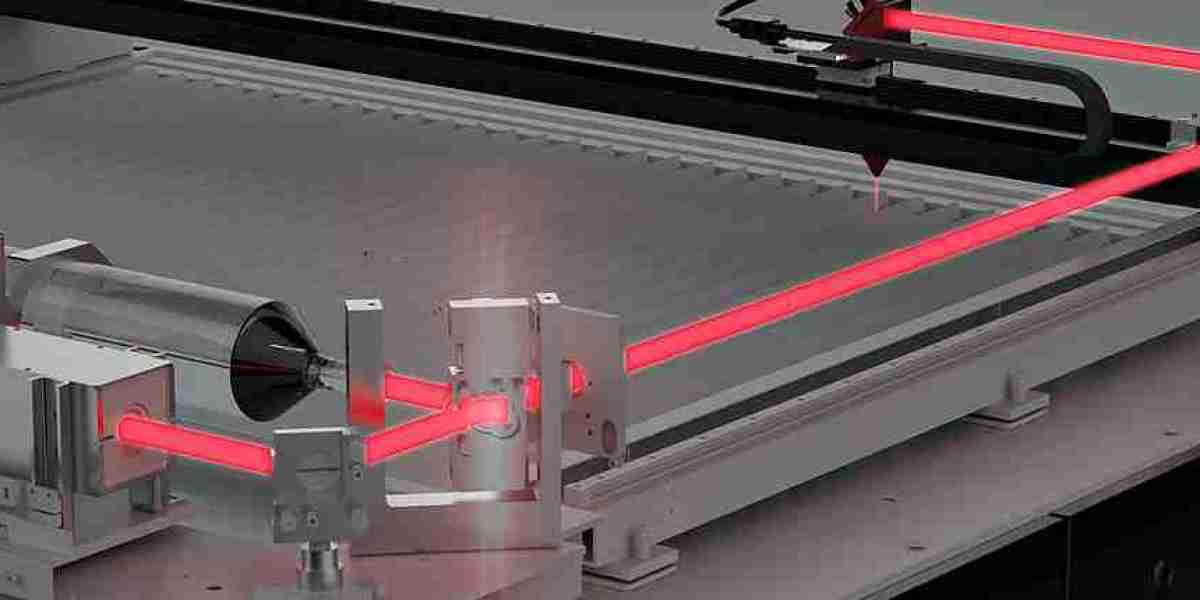The biophotonics market is growing rapidly, with significant advancements in technologies that apply light to biological materials for medical and diagnostic purposes. By enabling high-resolution imaging, non-invasive diagnostics, and targeted therapies, biophotonics is revolutionizing healthcare. With the continued development of optical coherence tomography (OCT), fluorescence-based imaging, Raman spectroscopy, and multiphoton microscopy, these innovations are not only improving the speed and accuracy of disease detection but also paving the way for personalized and precision medicine. In this article, we explore how innovations in biophotonics are reshaping healthcare and diagnostics, driving better outcomes, and enhancing patient care.
Technological Innovations in Biophotonics
Biophotonics technologies are transforming healthcare by providing non-invasive, high-resolution, and precise tools for early disease detection and monitoring. Some of the most impactful technologies include:
1. Optical Coherence Tomography (OCT)
Optical coherence tomography (OCT) is one of the leading imaging techniques in biophotonics. It is particularly useful in ophthalmology, offering high-resolution, cross-sectional images of biological tissues, especially the retina. OCT allows for early detection and monitoring of diseases such as macular degeneration, diabetic retinopathy, and glaucoma without the need for invasive procedures. The advancements in OCT, including swept-source OCT, are improving its imaging depth and speed, expanding its use in fields such as cardiology and dermatology.
2. Fluorescence Imaging and Spectroscopy
Fluorescence imaging and spectroscopy are crucial tools in the detection of cancer and other diseases. These techniques utilize light to excite molecules within the body, causing them to emit light that can be detected and analyzed. Fluorescence imaging enables the detection of tumors at an early stage, and fluorescence-guided surgery allows surgeons to identify and remove cancerous tissues more effectively. Fluorescence spectroscopy is used to monitor molecular biomarkers and identify disease at a molecular level.
3. Raman Spectroscopy
Raman spectroscopy is a powerful technique that analyzes the scattering of light to detect molecular vibrations. It is particularly useful in identifying tissue abnormalities and distinguishing between healthy and cancerous cells. Raman spectroscopy provides real-time, label-free analysis, offering an advantage over traditional biopsy methods. In clinical settings, Raman spectroscopy can be used for non-invasive cancer detection, aiding in early-stage diagnosis, surgical planning, and post-operative monitoring.
4. Multiphoton Microscopy
Multiphoton microscopy is another important biophotonics technology that enables deep tissue imaging without damaging cells. By using multiple photons to excite fluorophores in tissues, this technique allows researchers to visualize complex biological processes at the cellular and subcellular levels. Its applications are diverse, ranging from cancer research to neuroscience, where it helps study tissue behavior, immune responses, and disease progression.
Impact on Early Disease Detection and Personalized Healthcare
One of the most significant advantages of biophotonics technologies is their ability to detect diseases at an early stage, often when they are most treatable. These technologies are playing a crucial role in shifting from traditional methods of diagnosis to early, non-invasive detection that improves treatment outcomes. Here’s how biophotonics is making a difference:
Early Disease Detection
Biophotonics techniques such as OCT, fluorescence imaging, and Raman spectroscopy are all capable of identifying diseases before visible symptoms appear. This early detection is particularly valuable in cancer, cardiovascular diseases, and neurological conditions, where early intervention can significantly improve prognosis and reduce treatment costs. OCT is commonly used for monitoring retinal diseases, while fluorescence imaging can detect tumors even at the microscopic level. Raman spectroscopy is increasingly being used in oncology for distinguishing malignant from normal tissues, enabling early cancer detection and diagnosis.
Personalized Medicine
The ability to tailor treatments to individual patients based on their unique genetic, environmental, and lifestyle factors is at the core of personalized medicine. Biophotonics technologies provide detailed molecular and cellular insights, enabling clinicians to develop highly targeted treatment plans. For example, fluorescence and Raman spectroscopy can identify specific cancer biomarkers, allowing for personalized cancer treatment that is more effective and has fewer side effects. As the field advances, biophotonics will play an increasingly important role in defining individualized therapeutic strategies, improving patient outcomes, and reducing unnecessary treatments.
Challenges and Future Outlook
While biophotonics technologies offer tremendous potential, several challenges remain. High costs associated with some of the advanced systems, such as multiphoton microscopy and Raman spectroscopy, limit their widespread use in clinical settings. Furthermore, the need for specialized training and expertise to operate these technologies may also hinder their adoption, particularly in resource-limited regions. To overcome these barriers, manufacturers are focused on reducing costs through innovations in system design and manufacturing processes. Additionally, greater integration of artificial intelligence (AI) and machine learning with biophotonics could help streamline data analysis, making these technologies more accessible and efficient.
The regulatory landscape also plays a critical role in the adoption of biophotonics technologies. Ensuring that these innovations meet safety and efficacy standards is essential for gaining approval and achieving widespread clinical use. Continued collaboration between industry stakeholders and regulatory bodies will help develop clear guidelines, facilitating faster approval and integration of biophotonics into mainstream healthcare.
Despite these challenges, the future outlook for biophotonics is incredibly promising. As the technologies continue to evolve, they will likely become more affordable, user-friendly, and accessible across a wider range of healthcare settings. Moreover, the increasing demand for non-invasive diagnostics, personalized treatments, and faster, more accurate medical imaging will drive the expansion of biophotonics in healthcare and diagnostics.
Conclusion
Innovations in biophotonics are transforming the healthcare landscape by improving disease detection, enabling personalized treatments, and offering non-invasive diagnostic options. Technologies such as OCT, fluorescence imaging, Raman spectroscopy, and multiphoton microscopy are already having a profound impact on early disease detection and personalized medicine. As biophotonics continues to advance, it is expected to become an integral part of modern healthcare, contributing to better patient outcomes and more efficient healthcare systems. However, challenges related to cost, accessibility, and regulatory approval must be addressed to ensure the widespread adoption of these technologies. With continued innovation and investment, biophotonics is poised to play a critical role in the future of healthcare and diagnostics.



